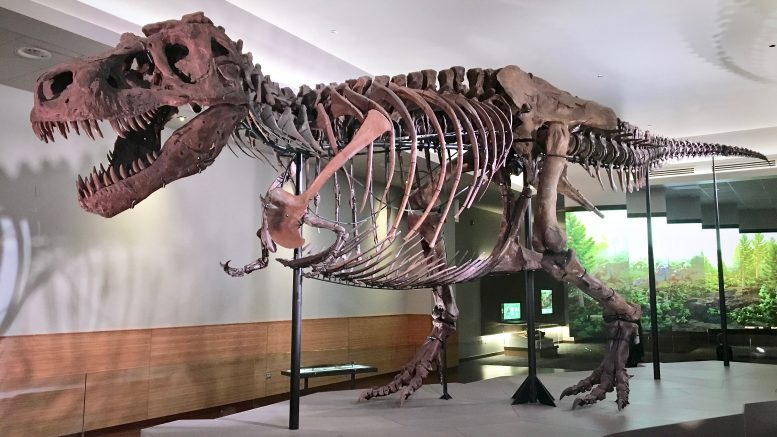Dinosaurs used to exist somewhere between 230 and 65 million years ago. The time was also known as the Mesozoic Era. In fact, it was long before humans existed. During the Mesozoic Era, dinosaurs were the dominant land animals in the world. Most of the known dinosaurs weighed more than 500 kg while another breed such as Compsognathus weighed more than 73 metric tons.
Because of the anatomical features found on dinosaurs, they are considered as reptiles and not mammals or amphibians. However, their fossilized heart found on the chest cavity of a dinosaur fossil fuel suggests that they had a mammalian structure with four chambers.
Let’s have a look at the five classifications of dinosaur skeletons:
- Tyrannosaurus: They were one of the largest meat-eating dinosaurs of all time. In fact, the biggest lifesize dinosaur skeleton found till date is of the tyrannosaurus. Based on the fossil evidence found, they were 12 meters long and about 4.5-6 meters tall. They had a 5-foot long massive skull, and their conical teeth used to pierce into the flesh of the prey. According to scientists, they had the capacity to eat up to 230 kg of meat in one bite. They were found in the forested river valleys in North America and became extinct about 65 million years ago.
- Triceratops: Triceratops had a frill of bone at the back of its skull and were large quadrupedal plant-eating dinosaurs. In fact, they had three prominent horns and their fossils date back to Cretaceous Period (the final 3 million years of Cretaceous Period). According to Paleontologists Triceratops were 9 meters long and the adult Triceratops weighed around 5450 – 7250 kg making it an approx. 12,000 – 16,000 pounds. The remains of Triceratops were found all over North America. Also, they possessed a gigantic skull of about 3 meters long. They also had smaller horn-like projections on the cheekbones.
- Stegosaurus: Stegosaurus is yet another plant-eating dinosaur who existed during the Late Jurassic Period (159 to 144 million years ago). According to Paleontologists, they were 6.5 – 9 meters long. Comparatively, they had a small skull and their forelimbs were much shorter than the hind limbs. This is why they had a characteristically arched appearance. According to Paleontologists, Stegosaurus had two parallel rows of plates that provided protection to their backbone and spinal cord. Also, they had two pairs of pointed bony spikes on the end of their tail that served as defensive weapons in case of an attack from another dinosaur.
- Protoceratops: Protoceratops is a species of horned dinosaurs that existed during the Upper Cretaceous Campan Stage. The fossils of Protoceratops were found in the Gobi Desert and are expected to be as old as 80 million years from the Late Cretaceous Period. They had a rostral bone on the upper beak and a small frill around the neck. When compared with small bipedal ceratopsians such as Psittacosaurus, Protoceratops tend to be larger and moved on all the four limbs. Also, their hind limbs were much stronger than the forelimbs. According to Paleontologists, Protoceratops used to be 1.8 meters long and the adult ones weighed somewhere around 180 kg.
- Iguanodon: The fossils of Iguanodon suggests that they survived during the Late Jurassic and Early Cretaceous periods (161.2 million to 99.6 million years ago). Their fossils have been found in various parts of the world including Europe, North Africa, North America, Australia, and Asia. Iguanodon is a part of the family Iguanodontidae, which are closely related to the duck-billed dinosaurs also known as hadrosaurs. According to Paleontologists, Iguanodon used to be 9 meters long and 2 meters tall and weighed somewhere between 4 to 5 tons. Iguanodon was able to move easily on two feet, however, they spent most of the time grazing and moving on four legs.
Conclusion
There has been a lot of unanswered questions related to dinosaurs and researchers are looking for the answers from the fossils found on the different parts of the world. These five classifications of dinosaur skeletons i.e. tyrannosaurs, triceratops, stegosaurus, protoceratops, and iguanodon were quite widespread in the Jurassic and Cretaceous Period.



Be the first to comment on "Classifications of dinosaur skeletons"